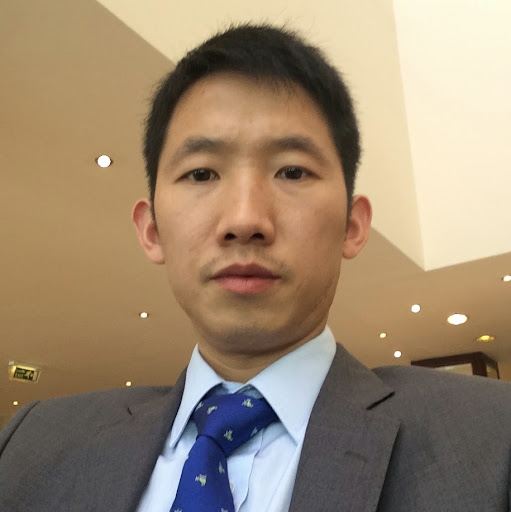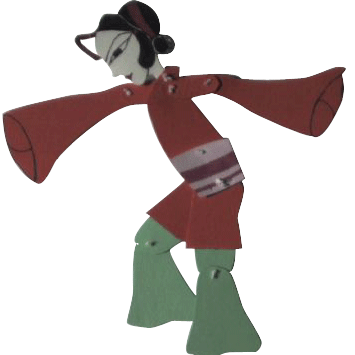Bin S Li
age ~56
from Renton, WA
- Also known as:
-
- Aimee Li
- Bin Lin
- Li S Bin
Bin Li Phones & Addresses
- Renton, WA
- Redmond, WA
- Mechanicsburg, PA
- Hayward, CA
- Fremont, CA
- Issaquah, WA
Work
-
Company:First it exchange inc
-
Address:2121 S El Camino Real, San Mateo, CA 94403
-
Phones:(650)5781918
-
Position:President
-
Industries:Management Consulting Services
Isbn (Books And Publications)

Lawyers & Attorneys

Bin Li - Lawyer
view sourceOffice:
Law Offices of Bin Li & Associates
Specialties:
Business
ISLN:
921007447
Admitted:
2002
University:
Southwestern Univ SOL; Southwestern Univ SOL; Los Angeles CA; Los Angeles CA; Foreign School; Foreign School
Name / Title
Company / Classification
Phones & Addresses
President
First IT Exchange Inc
Management Consulting Services
Management Consulting Services
2121 S El Camino Real, San Mateo, CA 94403
Internal Auditor Internal Audit
Dolby Laboratories, Inc.
Radio and Television Broadcasting and Communi...
Radio and Television Broadcasting and Communi...
100 Potrero Ave, San Francisco, CA 94103
President
Falcon International Investment Inc
1032 Irving St, San Francisco, CA 94122
1163 Chess Dr, San Mateo, CA 94404
1163 Chess Dr, San Mateo, CA 94404
President
SMARTBEAD, INC
1539 Vis Clb Cir #202, Santa Clara, CA 95054
5621 Cowell Blvd, Davis, CA 95618
408 Lemon St, San Luis Obispo, CA 93405
5621 Cowell Blvd, Davis, CA 95618
408 Lemon St, San Luis Obispo, CA 93405
Vice-President
Ccl Travel Inc
Travel Agency
Travel Agency
2121 S El Camino Real, San Mateo, CA 94403
(650)3720312
(650)3720312
Director
China Media Inc
Principal
Ben Li CPA
Accounting/Auditing/Bookkeeping
Accounting/Auditing/Bookkeeping
1300 Cedar St, San Carlos, CA 94070
CLOUD30 Tech LLC
Software Development and Related Service
Software Development and Related Service
4598 Ariel Ave, Fremont, CA 94555
Us Patents
-
Bridging Apparatus For Interconnecting A Wireless Pan And A Wireless Lan
view source -
US Patent:6452910, Sep 17, 2002
-
Filed:Jul 20, 2000
-
Appl. No.:09/619923
-
Inventors:Vikram Vij - Santa Clara CA
Carl A. Gerrard - Ellesmere Port, GB
Bin Li - Santa Clara CA
Larry Gardner - Los Altos CA
Sivasankar Chander - Santa Clara CA
Murthy Kunchakarra - Cupertino CA
Tim McCoy - Mountain View CA
Richard Swan - Portola Valley CA -
Assignee:Cadence Design Systems, Inc. - San Jose CA
-
International Classification:H04B 700
-
US Classification:370310, 370315
-
Abstract:A Wireless bridge conjoins two previously incompatible technologies within a single device to leverage the strengths of each. The Wireless bridge marries the Personal Area Network (PAN) technology of Bluetooth as described in Bluetooth Specification Version 1. 0B with the Wireless Local Area Network (WLAN) technology described in the IEEE802. 11 specification to provide a wireless system level solution for peripheral devices to provide Internet service interactions. The invention brings together in a single working device implementations of these technologies so they do not interfere or disrupt the operation of each other and instead provide a seamless transition of a Bluetooth connection to Wireless Local Area Network/Internet connection. From the Wireless Local Area Network perspective the inventive wireless bridge extension allows a Bluetooth-enabled device to roam from one Wireless Access Point (bridge) to the next without losing its back end connection. The invention takes into account the minimum separation and shielding required of these potentially conflicting technologies to inter-operate.
-
Bridging Apparatus For Interconnecting A Wireless Pan And A Wireless Lan
view source -
US Patent:7095748, Aug 22, 2006
-
Filed:May 22, 2002
-
Appl. No.:10/154036
-
Inventors:Vikram Vij - Santa Clara CA, US
Carl A. Gerrard - Chester, GB
Bin Li - Santa Clara CA, US
Larry Gardner - Los Altos CA, US
Sivasankar Chander - Santa Clara CA, US
Murthy Kunchakarra - Cupertino CA, US
Tim McCoy - Mountain View CA, US
Richard Swan - Portola Valley CA, US -
Assignee:Cadence Design Systems, Inc - San Jose CA
-
International Classification:H04L 12/28
-
US Classification:370401, 370328
-
Abstract:A Wireless bridge conjoins two previously incompatible technologies within a single device to leverage the strengths of each. The Wireless bridge marries the Personal Area Network (PAN) technology of Bluetooth as described in Bluetooth Specification Version 1. 0B with the Wireless Local Area Network (WLAN) technology described in the IEEE802. 11a specification to provide a wireless system level solution for peripheral devices to provide Internet service interactions. The invention brings together in a single working device implementations of these technologies so they do not interfere or disrupt the operation of each other and instead provide a seamless transition of a Bluetooth connection to Wireless Local Area Network/Internet connection. From the Wireless Local Area Network perspective the inventive wireless bridge extension allows a Bluetooth-enabled device to roam from one Wireless Access Point (bridge) to the next without losing its back end connection. The invention takes into account the minimum separation and shielding required of these potentially conflicting technologies to inter-operate.
-
Quantitative Amplification With A Labeled Probe And 3′ To 5′ Exonuclease Activity
view source -
US Patent:7445898, Nov 4, 2008
-
Filed:Mar 31, 2005
-
Appl. No.:11/097463
-
Inventors:Bin Li - San Mateo CA, US
Lei Xi - Foster City CA, US
Yan Wang - San Francisco CA, US
Peter B. Vander Horn - Foster City CA, US -
Assignee:Bio-Rad Laboratories, Inc. - Hercules CA
-
International Classification:C12Q 1/68
C12P 19/34 -
US Classification:435 6, 435 912
-
Abstract:This invention provides methods and kits for performing a quantitative amplification reaction. The method employs a polymerase enzyme and an enzyme having a 3′ to 5′ exonuclease activity that cleaves the 3′ oligonucleotide of the probe.
-
Hierarchically Disassembling Messages
view source -
US Patent:8250234, Aug 21, 2012
-
Filed:Apr 26, 2010
-
Appl. No.:12/767091
-
Inventors:Nicholas A. Allen - Redmond WA, US
John A. Taylor - Bellevue WA, US
Stefan R. Batres - Sammamish WA, US
Bin Li - Sammamish WA, US -
Assignee:Microsoft Corporation - Redmond WA
-
International Classification:G06F 15/16
G06F 12/00 -
US Classification:709236, 709206
-
Abstract:The present invention extends to methods, systems, and computer program products for hierarchically disassembling messages. The functionality of disassemblers and framers is decoupled such that framers for different types of messages can be utilized at the same level in a hierarchy without having to also change disassemblers. Virtually any level of disassembly is possible to address any corresponding level of message nesting. Disassembly can be performed on a per message or per session basis.
-
Quantitative Amplification With A Labeled Probe And 3′ To 5′ Exonuclease Activity
view source -
US Patent:8426132, Apr 23, 2013
-
Filed:Nov 3, 2008
-
Appl. No.:12/264200
-
Inventors:Bin Li - San Mateo CA, US
Lei Xi - Foster City CA, US
Yan Wang - San Francisco CA, US
Peter B. Vander Horn - Foster City CA, US -
Assignee:Bio-Rad Laboratories, Inc. - Hercules CA
-
International Classification:C12Q 1/68
C12P 19/34 -
US Classification:435 612, 435 912
-
Abstract:This invention provides methods and kits for performing a quantitative amplification reaction. The method employs a polymerase enzyme and an enzyme having a 3′ to 5′ exonuclease activity that cleaves the 3′ oligonucleotide of the probe.
-
Methods And Structure For Utilizing Dynamic Capabilities In Client/Server Software Interaction
view source -
US Patent:8473547, Jun 25, 2013
-
Filed:Sep 2, 2010
-
Appl. No.:12/874390
-
Inventors:Hitoshi Sekine - Los Altos CA, US
Yue Liu - Milpitas CA, US
Bin Li - Sunnyvale CA, US -
Assignee:Ricoh Company, Ltd - Tokyo
-
International Classification:G06F 15/16
G06F 15/173
G06F 3/12
G06F 9/46
G06F 3/00
G06F 9/44
G06F 13/00 -
US Classification:709203, 709201, 709202, 709217, 709219, 709226, 709229, 358 113, 358 115, 718100, 719313
-
Abstract:Methods and structure for improved client/server program communication by transmitting dynamically maintained service capabilities information from the server program to the client program. The client program generates a service request based on the received service capabilities information. Since the service capabilities information is retrieved from the server program and is dynamically maintained by the server program, the client program need not be updated when available services from the server program are modified. In one exemplary embodiment, the client program may be a print application client program and the server program may be a print server program. The print client program retrieves the current printer device capabilities (service capabilities information) and generates a print job ticket (service request) based on the retrieved, dynamically maintained printer device capability information. The job ticket is then transmitted to the server program to cause the printing of the document specified by the job ticket.
-
Method Of Making A Paired Tag Library For Nucleic Acid Sequencing
view source -
US Patent:8530197, Sep 10, 2013
-
Filed:Jan 8, 2009
-
Appl. No.:12/350837
-
Inventors:Bin Li - Foster City CA, US
Lei Xi - Foster City CA, US
Swati S. Ranade - San Mateo CA, US
Yangzhou Wang - Foster City CA, US -
Assignee:Applied Biosystems, LLC - Carlsbad CA
-
International Classification:C12P 19/34
C12Q 1/68 -
US Classification:435 912, 435 61
-
Abstract:The present disclosure relates to methods and compositions for making paired tags and paired tag libraries.
-
Registration Of Scanning Data Acquired From Different Patient Positions
view source -
US Patent:20050169507, Aug 4, 2005
-
Filed:Nov 21, 2002
-
Appl. No.:10/496430
-
Inventors:Kevin Kreeger - Sunnyvale CA, US
Suzanne Stover - Sag Harbor NY, US
Anna Ceteno - Carle Place NY, US
Bin Li - Centereach NY, US
Frank Dachille - Amityville NY, US
Jeffrey Meade - Bay Shore NY, US -
International Classification:G06K009/00
-
US Classification:382128000, 382154000
-
Abstract:A system and method are provided for generating a three-dimensional visualization image of an object such as an organ using volume visualization techniques and exploring the image using a guided navigation system that allows the operator to travel along a flight path and to adjust the view to a particular portion of the image of interest in order, for example, to identify polyps, cysts or other abnormal features in the visualized organ; where imaging data sets are acquired using conventional two-dimensional scans of the object in both a supine and prone orientation, and correspondence between the respective data sets is determined to permit jumping from one visualization orientation to the other while remaining at the same virtual location within the organ.
Resumes

Bin Li
view sourceWork:
a division of GOLDEN APPLEXX CO
Jun 2013 to 2000
Graphic Designer REMODEL2 SYMPOSIUM
2010 to 2000
FREELANCE WSDEN HOME TEXTILE
Changsha, CN
Feb 2011 to Jan 2012
Commercial advertising design for marketing CHENGWEI ANIMATION
Changsha, CN
2010 to 2011
Graphic Designer / 3D Modeling Tutor
Jun 2013 to 2000
Graphic Designer REMODEL2 SYMPOSIUM
2010 to 2000
FREELANCE WSDEN HOME TEXTILE
Changsha, CN
Feb 2011 to Jan 2012
Commercial advertising design for marketing CHENGWEI ANIMATION
Changsha, CN
2010 to 2011
Graphic Designer / 3D Modeling Tutor
Education:
Claremont Graduate University
2014
M.F.A in Fine Art Qing Dao University
2009
B.A in Graphic design
2014
M.F.A in Fine Art Qing Dao University
2009
B.A in Graphic design
Skills:
Adobe Suite (InDesign, Illustrator, Photoshop) Maya Cinema 4D After Effects Microsoft Office Suite

Bin Li Hayward, CA
view sourceWork:
Criminal Investigation Data Center
Xi'an, China
Mar 2006 to Sep 2007
Data Analyst Intern Ying CPA Firm
Xian, China
Jan 2005 to Jan 2006
CPA Assistant
Xi'an, China
Mar 2006 to Sep 2007
Data Analyst Intern Ying CPA Firm
Xian, China
Jan 2005 to Jan 2006
CPA Assistant
Education:
California State University
Hayward, CA
2013
Master of Science in Statistics Xi'an university of Finance and Economics
2008
Bachelor in Finance
Hayward, CA
2013
Master of Science in Statistics Xi'an university of Finance and Economics
2008
Bachelor in Finance
Skills:
SAS, SQL,MACRO,MINITAB,MSOFFICE,ANO... MATHEMATICS
Classmates

Bin LI, suny new paltz ny...
view source
Guilford Elementary Schoo...
view sourceGraduates:
Yahaya Yahaya Babangida (2004-2008),
Karl Trautner (2003-2007),
Bin LI (1998-2002),
Alexandris Clark (2003-2007),
Cindy Sampsell (1967-1971)
Karl Trautner (2003-2007),
Bin LI (1998-2002),
Alexandris Clark (2003-2007),
Cindy Sampsell (1967-1971)

University of Missouri, S...
view sourceGraduates:
Raymond Iggulden (1960-1964),
Bin LI (1989-1993),
Ryan Vines (2005-2009),
Joseph Nugent (1967-1971)
Bin LI (1989-1993),
Ryan Vines (2005-2009),
Joseph Nugent (1967-1971)

suny new paltz ny, New pa...
view sourceGraduates:
Bin LI (1997-2001),
Kenneth Munoz (1968-1972),
Robert McLean (1989-1993),
Marcia Wasserman (1950-1954),
Glen Burn (1975-1979),
Megan Fisher (2007-2008)
Kenneth Munoz (1968-1972),
Robert McLean (1989-1993),
Marcia Wasserman (1950-1954),
Glen Burn (1975-1979),
Megan Fisher (2007-2008)

Lansdale Catholic High Sc...
view sourceGraduates:
Danielle Clemens (1994-1998),
Kathleen Storrs (1973-1977),
Bin LI (1996-2000),
Jeannie Grosso (1980-1984)
Kathleen Storrs (1973-1977),
Bin LI (1996-2000),
Jeannie Grosso (1980-1984)
Myspace
Youtube
Flickr

Bin Li
view source
Hyun Bin Li
view source
Bin Rui Li
view source
Bin Li Lee
view source
Bin Li
view source
Bin Li
view source
Bin Li
view source
Bin Li
view sourceGoogleplus

Bin Li
Lived:
San jose ca
Work:
Broadcom
Education:
Santa Clara University, Tianjin University, Qixian High school

Bin Li
Education:
Brigham Young University - Accounting
About:
Via what ways to accomplish above dream? multi-disciplinary, integral.
Tagline:
I want to accomplish a lot of things in my life, not for me to leave a legacy, but for people, community, society, and the world.
Bragging Rights:
Multi-tasker; Creator; Designer

Bin Li

Bin Li
Tagline:
Smart is the new sexy

Bin Li
Education:
R.I.T. - FILM
About:
I am simply a filmmaker. =)

Bin Li
Education:
Nanjing University

Bin Li

Bin Li
Work:
Polycom - Sales Engineer
Get Report for Bin S Li from Renton, WA, age ~56















